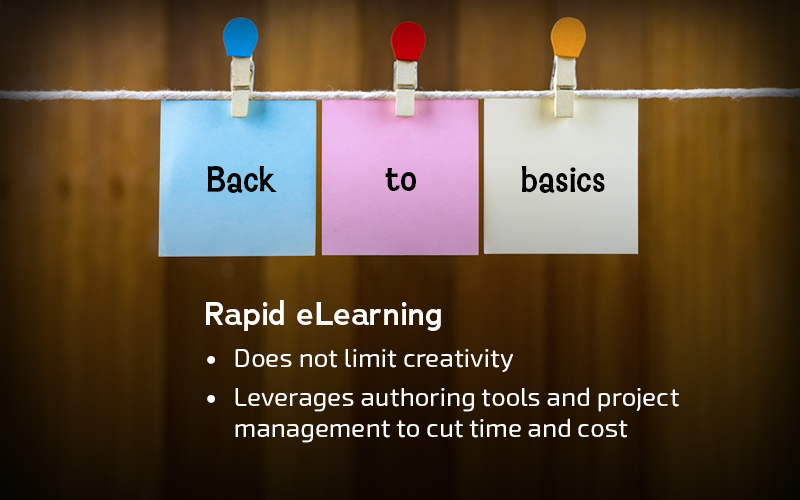4 Mistakes Your Team is Making in the Pursuit of E-learning Implementation

Organizations now believe that it is important to bring the training to employees instead of bringing employees to the training centers. Hence we are witnessing the shift from classroom training to technology-enabled learning. However, transforming from the traditional instructor-led training to eLearning involves many challenges. There is the danger of your team making one or more of these four mistakes while developing eLearning courses.
1. Overloading the course with information
If your goal is not to put your learners to sleep, then you should consider designing courses, paying careful attention to the Cognitive Load theory. According to this theory, information retention is effective, as long as it doesn’t overwhelm the mental capacity of learners. Information overload happens two ways, by either dumping too much text on the slide or developing courses of long duration.
For example, a 1–hour e-learning course can be broken down into small, micro modules of 15 mins each. In a recent e-Learning Summit held in Mumbai, one of the participants has vouched for micromodules, saying that course completion rates have jumped from 50% to 98%.
Also, to avoid heavy text on the slides, you can convert your content to graphics, videos, animations, infographics, and various interactivities. It is also essential to differentiate the ‘need to know’ content from the‘nice to know’. Need to know content can be presented on the slide and nice to know can be elaborated in the audio or presented in the references.
2. Not making your course Section 508 compliant
Section 508 compliance is still gaining a foothold in the field of e-learning. As far as the United States is concerned, all e-learning courses should comply with Section 508. In Australia, courses should comply with WCAG 2 AA; In India it’s WCAG 2 Level A, in France it is RGAA 3, like wise you have different standards for different countries. To know more about the standards, read this article that provides comprehensive details.
These standards, when followed, ensure your e-learning content is accessible to even learners with disabilities such as blindness, low vision, speech and hearing impairments. And therefore, if you want to make your eLearning accessible to people with disabilities, you need to ensure your courses meet the technical standards outlined in WCAG and Section 508.
3. Using generic content, that does not support your unique training needs
When implementing e-Learning, off-the-shelf courses seem to be an easy answer as they help you quickly implement e-learning within a small budget; however, this may not be effective in reaching your learning goals. Every organization has unique training needs, related to its organizational culture, processes, and systems. Organizations cannot source content from external sources for these unique requirements.
Using organization-specific content, that caters to your learners’ needs will, apart from offering good control over the training content, also save a lot of time and money, once you start your project. This is because all the media elements, templates, and interactivities used in one project can be reused in your next projects.
4. Ignoring your global audience and not considering your future translation requirements
In an endeavor to quickly start developing an e-learning course, the global audience is usually ignored. Once an English course is developed, you might realize that the same course cannot be translated and rolled out globally. Since your course is not culturally neutral, you may have to make a lot of changes to make it globally acceptable. When you start developing content for the e-learning course, you need to make sure it is translation-friendly. Your content must be free of graphics, idioms, references, and symbols that are culture-specific. Your writing style should be concise and clear because translators charge you per word.





